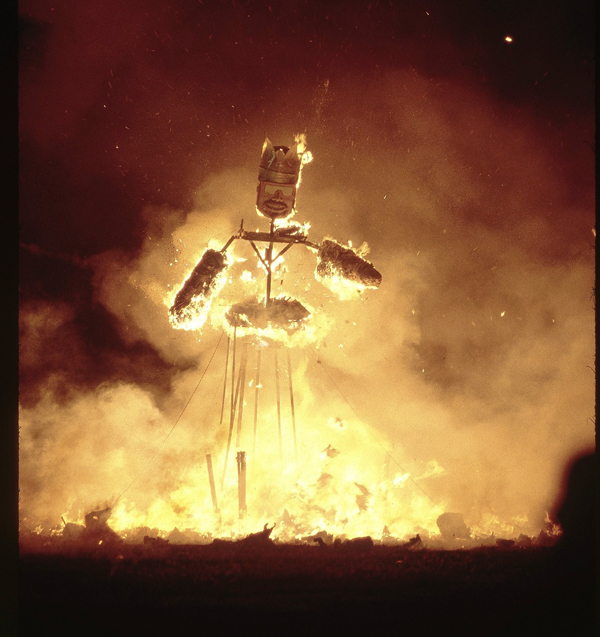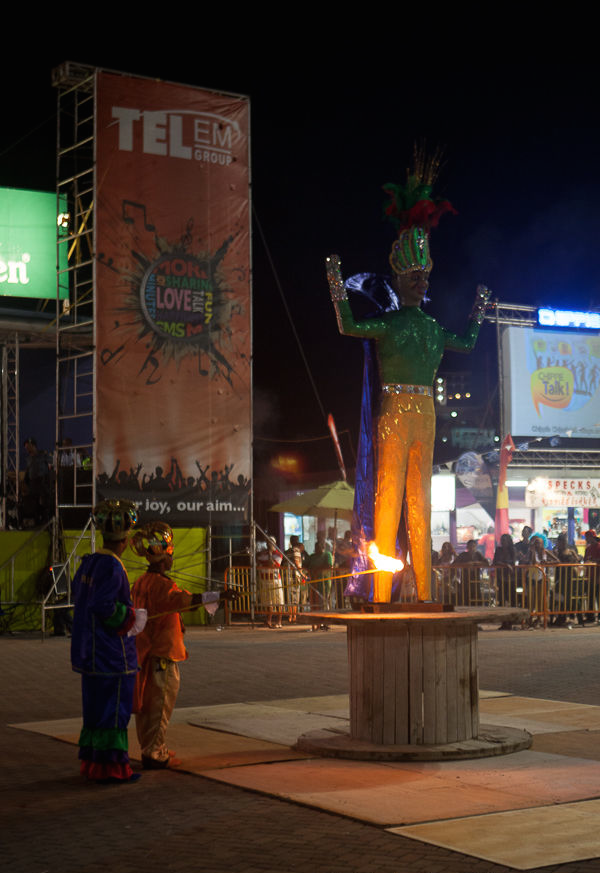
Photo: Christophe Seger
This tradition continued around Europe (thankfully without the human sacrifice) as Roman rituals, like Saturnalia, became part of celebrations for Christian holidays like Easter and Christmas. Momus, with his reputation for irreverence, made the perfect inspiration for carnival festivities — the first carnival in the Netherlands (1839), for example, was called the Momus carnival. Even today, cities like Cadiz, Spain and Nice, France burn Momus effigies at the end of their Carnival celebrations. In the United States, the Knights of Momus are one of New Orleans’ oldest continuously operating Carnival clubs.
In Latin America, King Momus became Rei (or Rey) Momo. Some countries construct flammable, paper mache Rei Momo figures like the ABC islands, while others like Brazil and Colombia elect a local man to reign over carnival as King.
The ABC tradition leaves political responsibilities to the Prince and Pancho, similarly elected members of the Carnival court — Momo is alive only for Carnival, and his death on the final night also means the end of fuku (bad luck), infertility, and sins. Sounds serious, but this is a celebration as much as any other part of Carnival. Sometimes carnival-goers travel to Curaçao, the largest of the three islands, just for the event, as mentioned in our Aruba Carnival story. Spectators dance and sing to King Momo, the Tumba King performs… it’s a great way to cap off the craziness of carnival season and get ready for the next year with a karmic clean slate. Bon Karnaval!



